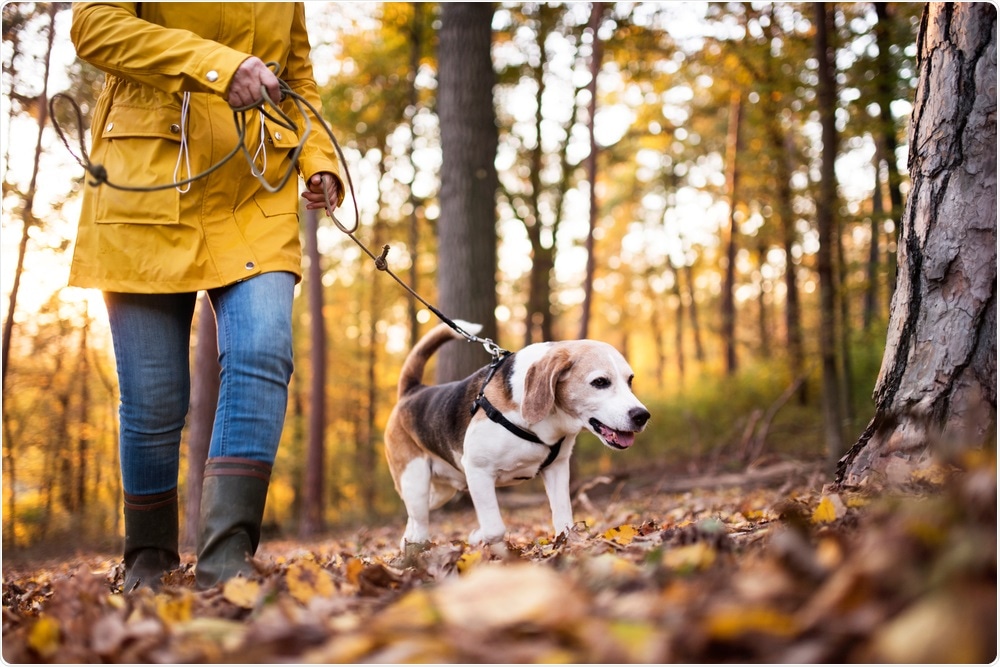Older Americans who stay active by dog walking are more likely to fracture a bone than their peers, according to a new study by Penn Medicine researchers.

Dog walking has a number of physical and emotional benefits, and many older people regularly walk dogs to stay active and enjoy the company of their pets. However, the number of older people needing medical treatment for injuries associated with walking dogs has seen a significant increase, up from 1,700 in 2014 to 4,400 in 2017, approximately.
A retrospective, cross-sectional analysis formed the basis of the study, with information taken from the National Electronic Injury Surveillance System database of the US Consumer Product Safety Commission, which provides anonymous data on product- and activity-related injuries available to the public. It includes around 100 US hospital emergency departments.
The team reviewed 1033 fracture cases occurring between 2004 and 2017 in patients of 65 years or older. Their review discovered a sex disparity in injury burden, with women suffering the most fracture cases, urging that older women be made “aware of the risk” of dog ownership.
Hip fractures were the most common injury sustained, with the upper extremity being the most frequently injured region, including wrist, upper arm, finger, and shoulder fractures. Out of all patients, 28.7 percent required hospital treatment.
Mortality rates related to hip fractures in patients over 65 almost reach 30%. This is due to hip fractures leading to sudden, significant changes in lifestyle, such as decreased activity levels and mobility.
The publication acknowledged some limitations to the study, stating, “our findings likely underestimate the morbidity associated with elderly Americans walking leashed dogs.”
The study, which is believed to be the first of its kind, only investigated reported fracture cases, and cases from people who visited an emergency room. Other injuries, such as tendon and muscle damage, and patients who did not wish to follow up other types of care were not included in the study.
Details like the size of the dogs and whether operative interventions were needed were also not included in the investigation.
The study, which was published in JAMA Surgery on March 6th 2019, does not intend to deter older people from staying active by walking dogs. Instead, it aims to draw “attention to an activity that can result in significant injury.”
It goes on to say that for “older adults – especially those living alone and with decreased bone mineral density – the risks associated with walking leashed dogs merit consideration.”
Everyday actions mean everyday consequences. […] While it is important for medicine to sometimes focus on the rarer but devastating conditions such as cancer and heart attacks, we also have to remember that understanding and improving the little things in life can have a dramatic, positive effect.”
Jaimo Ahn, MD, Ph.D., Senior Author
Discussing their findings, authors of the study wrote that clinicians could help minimize risk of fractures in older people by “advocating for preventative actions, such as obedience training […] or suggesting smaller dog breeds”.